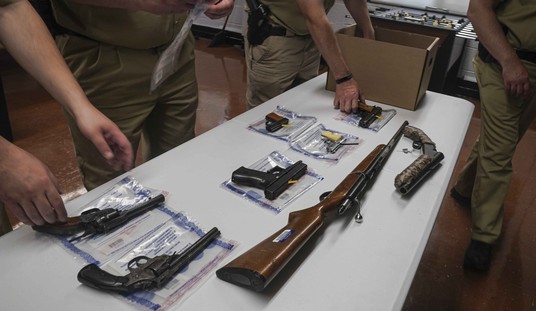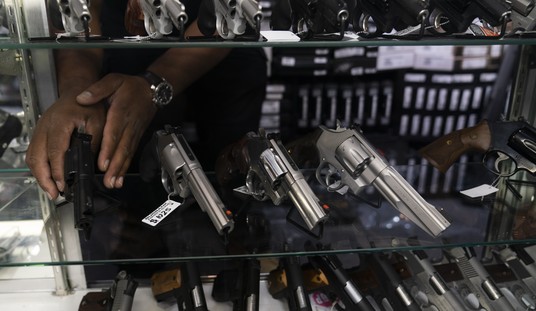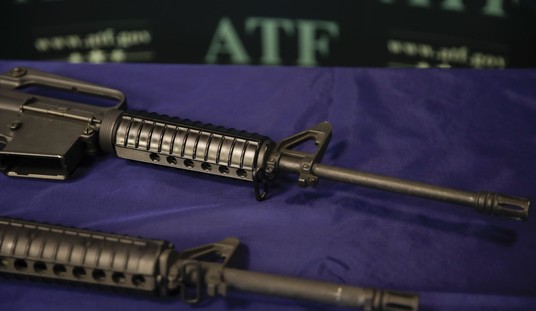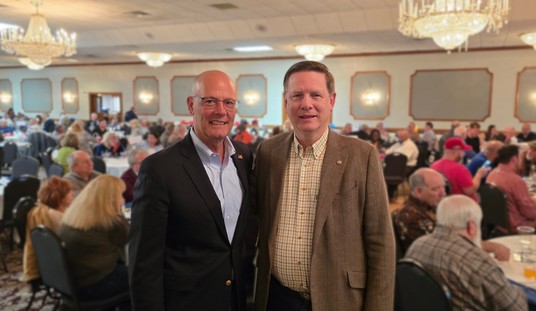Gun control groups like Everytown and Brady have full wish list of anti-gun initiatives that they want to see enacted by the Biden administration and Democrats at the state and federal level, but one of their top priorities at the moment is a ban on things that aren’t even firearms at all.
According to the Bureau of Alcohol, Firearms, Tobacco, and Explosives, a firearm is defined by the Gun Control Act of 1968 as “any weapon which will or is designed to or may readily be converted to expel a projectile by the action of an explosive,” including the frame or receiver of any such weapon.
If a frame or receiver is not fully completed, however, the ATF does not consider that to be a “firearm” under federal law, and these unfinished parts can be sold without background checks or serial numbers.
Gun ban groups are suing the agency in an attempt to force them to redefine a firearm to include hunks of metal that aren’t frames or receivers at all, and the ATF has also recently targeted at least one company for selling kits that allow buyers to produce their own frame or receiver at home.
Now a California lawmaker has introduced legislation to ban the sale of “ghost gun” kits across the state, and as you can imagine, the anti-gun zealots are celebrating.
It’s simple: Anything that can be assembled into a gun should be treated as a gun.
Thank you to @AsmChrisWard for introducing this proactive, common-sense legislation to stop the flow of untraceable and unregulated “ghost guns.” #CAleg @ca_brady https://t.co/O7UjroTVKy
— Brady | United Against Gun Violence (@bradybuzz) January 25, 2021
Brady’s tweet reveals the problem with the position taken by these anti-gun groups. If their proposed standard is that anything that could possibly be turned into a gun should be treated as if its one already, then California’s going to be treating raw materials as if they’re firearms. A block of steel could be used to help build a skyscraper or another small segment of the state’s high-speed rail to nowhere, but it could also potentially be used to make a gun.
While the legislation that Brady is backing doesn’t actually impose that incredibly vague standard, the provisions in AB311 are still incredibly problematic.
Under the new bill proposed by Assemblyman Chris Ward, vendors at gun shows in the state would be prohibited “from possessing, displaying, offering to sell, selling, or transferring any firearm precursor parts.” According to state law, a firearm precursor part is defined as:
a component of a firearm that is necessary to build or assemble a firearm and is described in either of the following categories:
(1) An unfinished receiver, including both a single part receiver and a multiple part receiver, such as a receiver in an AR-10- or AR-15-style firearm. An unfinished receiver includes a receiver tube, a molded or shaped polymer frame or receiver, a metallic casting, a metallic forging, and a receiver flat, such as a Kalashnikov-style weapons system, Kalashnikov-style receiver channel, or a Browning-style receiver side plate. (2) An unfinished handgun frame.
Most unfinished frames and receivers are sold 80% completed, which leaves the buyer to do the remaining 20% of the work that will turn the unfinished material into a legally-defined firearm. Note that under California law, however, there is no definition of an “unfinished receiver” or frame. When exactly does a hunk of metal or a spool of polymer material become a “firearm precursor part” regulated under California law? There doesn’t appear to be a good answer, as the Firearms Policy Coalition’s Craig DeLuz pointed out to lawmakers in 2016, when Assemblyman Mike Gibson tried to advance an earlier version of a ban on so-called ghost guns.
As DeLuz pointed out to lawmakers, blocks of aluminum are “readily converted” to a firearm if you have a CNC machine. Flat pieces of metal can be readily converted into lower receivers. DeLuz even shared a video of a guy who turned an old shovel into a receiver. At what point do blocks of metal or snow shovels have to be serialized because they could potentially be turned into a firearm?
It’s a vague and unworkable standard, which may be one reason why it’s so popular with anti-gun politicians and gun control groups. With an anti-gun supermajority in the state legislature, AB 311 may very well get to Gov. Gavin Newsom’s desk for his signature this year, but if enacted into law the measure is sure to face a legal challenge. In the meantime, with violent crime soaring in California, politicians should be putting their focus on the individuals who are actually responsible for the violence instead of trying to ban and regulate every object that could potentially be turned into a firearm.
Editor’s Note: Want to support Bearing Arms so we can tell the truth about Joe Biden and the Left’s radical gun control agenda? Join Bearing Arms VIP. Use the promo code GUNRIGHTS to get 25% off your membership.









Join the conversation as a VIP Member